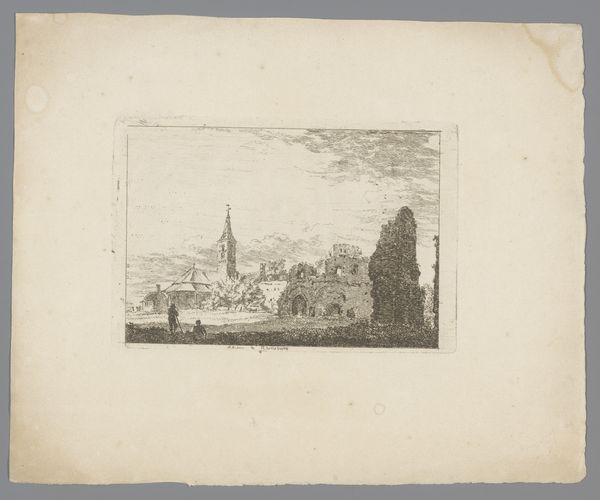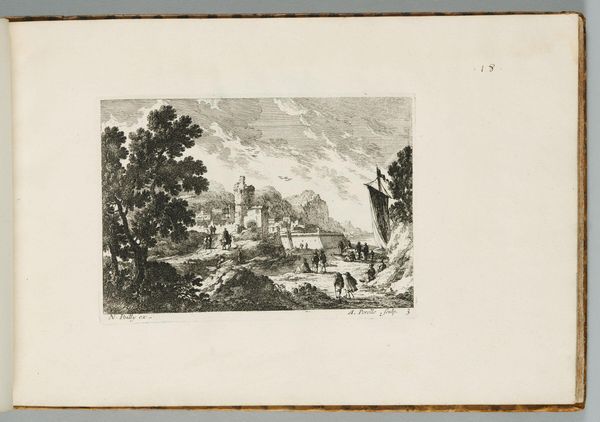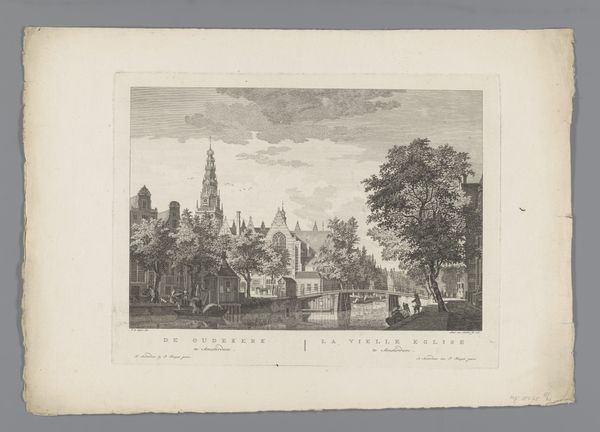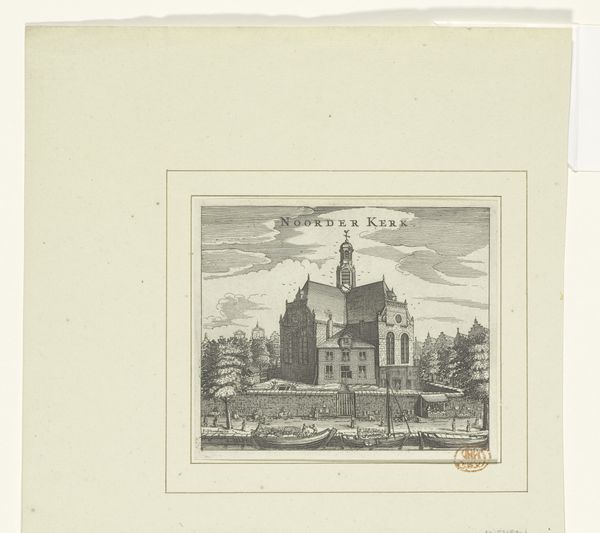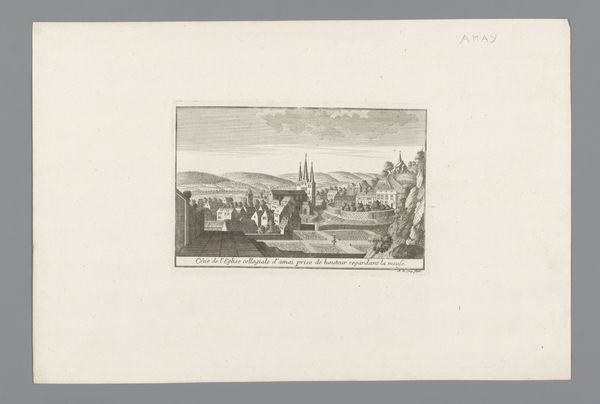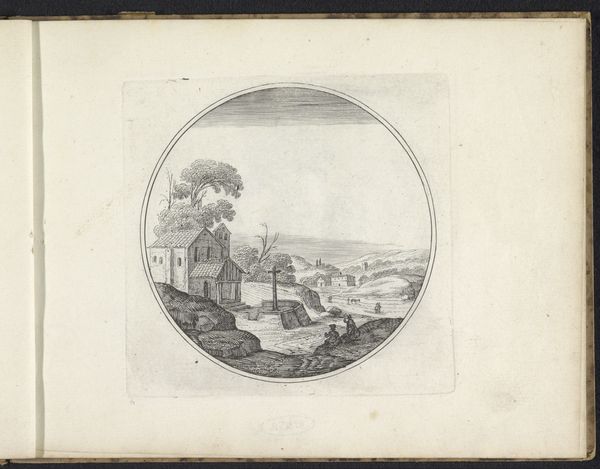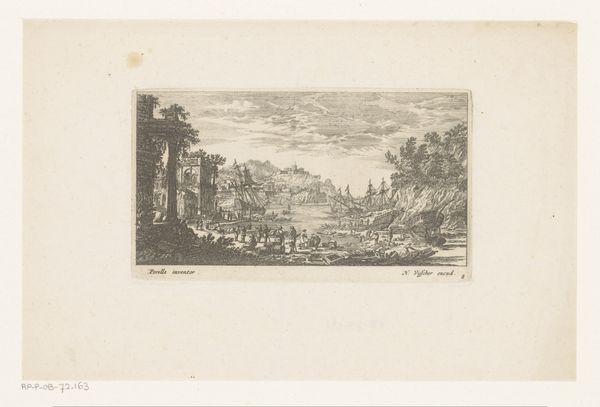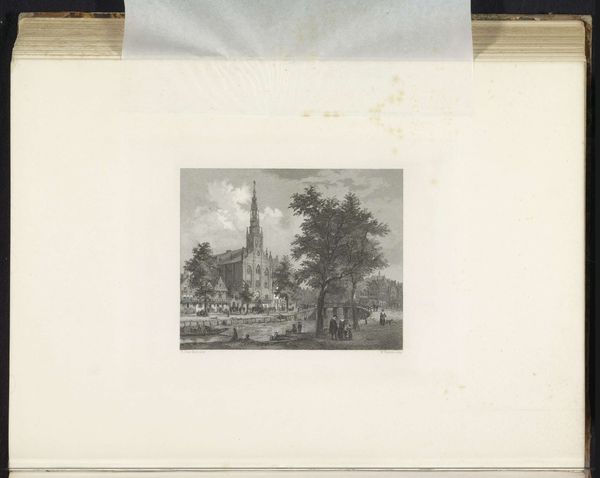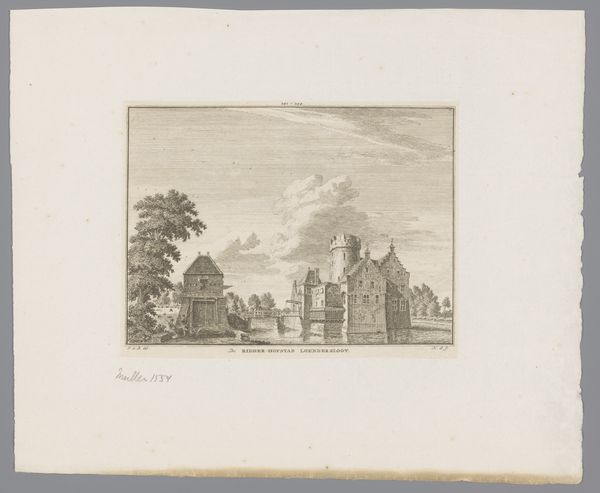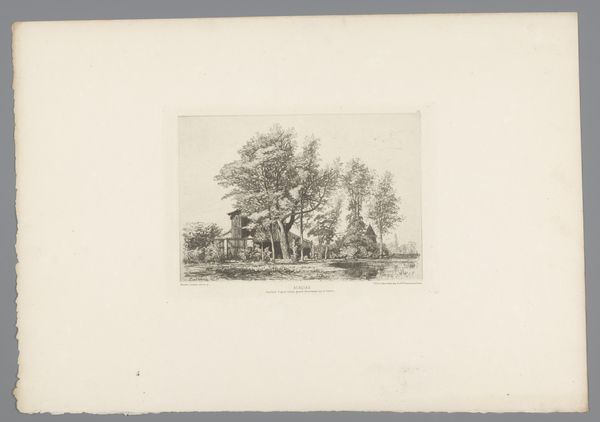
print, engraving
#
neoclacissism
#
dutch-golden-age
# print
#
landscape
#
cityscape
#
genre-painting
#
engraving
#
realism
Dimensions: height 82 mm, width 109 mm
Copyright: Rijks Museum: Open Domain
Curator: This engraving, "Gezicht op het dorp Heiloo," which translates to "View of the Village of Heiloo," dates back to between 1786 and 1792 and is the creation of Carel Frederik Bendorp. It’s currently housed here at the Rijksmuseum. Editor: Ah, Heiloo… looks like such a peaceful place. Almost… staged? It feels very controlled and composed, like a perfectly arranged miniature set. You could almost believe it's an idealized representation. Curator: That's interesting. Remember that 18th-century landscapes often reflected broader societal values, like order and progress. Depictions like these shaped perceptions, especially amongst the urban elite, of the rural idyll. It speaks to power, to framing, and to defining acceptable public imagery. Editor: I see what you mean. The people seem tiny, dwarfed by the church and neat rows of trees. Even the animals seem to be marching in formation! It’s all a bit too perfect, you know? The image flattens out the chaos and textures of the land… turning lived-in landscapes into little dioramas. Almost a marketing poster. Curator: Consider the rise of landscape prints as collectibles. Owning this was about claiming a visual piece of the Dutch countryside. Moreover, look closely at the technique. The detailed engraving suggests meticulous labor. The print itself became a valuable object embodying leisure and culture. Editor: But look at that light! There’s an airy feel here. You're spot on about that ordered perfection, which has its charm! If it weren’t an engraving—the crisp lines, the monochrome, that perfect perspective—it would probably bore me to tears. Still, what do you take away from looking at it today? Curator: I'm left reflecting on the role of art in shaping national identity and projecting an image of prosperity and order. Art as propaganda? Possibly too strong. Still, it raises questions. Editor: Well, I'm going to hold onto that "diorama" thought! I leave today with an unsettling calmness. Maybe it's propaganda; I felt I needed something spicier after looking at this perfect scenery. Thanks for framing it.
Comments
No comments
Be the first to comment and join the conversation on the ultimate creative platform.
